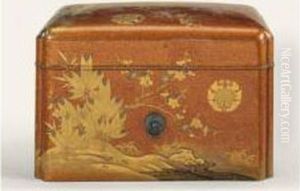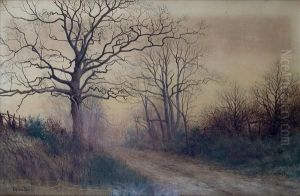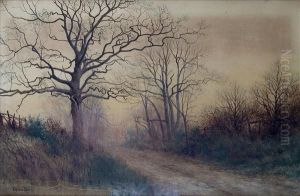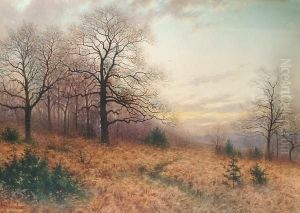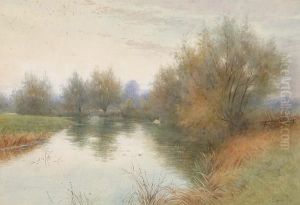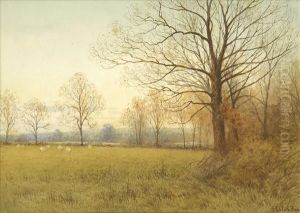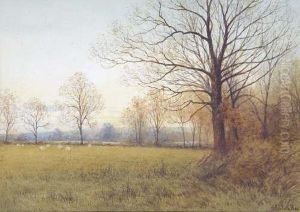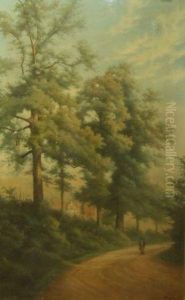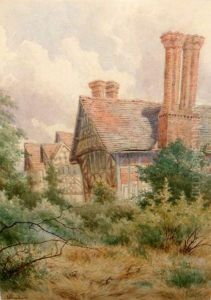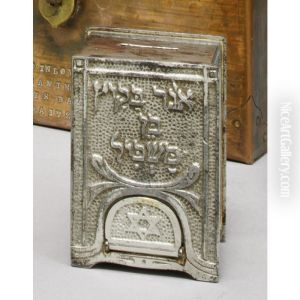Alfred Ashdown Box Paintings
Alfred Ashdown Box was an English painter and etcher whose work spanned the late 19th and early 20th centuries. Born in 1870, Box's artistic journey was marked by his deep engagement with the British landscape, which remained a central theme throughout his career. He was particularly known for his adept use of light and shadow, which brought a distinctive vibrancy and depth to his depictions of the English countryside.
Box's education in art began at a young age, showing remarkable talent that would eventually lead him to study at prominent institutions. Although specific details about his education are less documented, it is known that Box was part of a generation of artists who were exploring new techniques and perspectives, influenced by the changing art movements of their time, including Impressionism and Realism.
Throughout his career, Alfred Ashdown Box participated in numerous exhibitions, gaining recognition amongst his peers and the public alike. His etchings and paintings were celebrated for their technical skill and emotional resonance, capturing the serene beauty of rural England with a palpable sense of affection and nostalgia. Despite the popularity of his landscapes, Box also explored other subjects, including portraiture and urban scenes, though these remained less central to his body of work.
The early 20th century was a period of transition for many artists, as the advent of modernism began to challenge traditional artistic values. Box, however, remained largely committed to his realistic and detailed style, resisting the pull of abstract and avant-garde movements. This commitment to traditionalism did not, however, diminish his relevance or acclaim; instead, it solidified his position as a key figure in the preservation of England's natural and architectural heritage through art.
Alfred Ashdown Box's legacy is marked by his contribution to the British art scene, particularly in the realm of landscape painting and etching. His works continue to be appreciated for their beauty, craftsmanship, and historical value, capturing a bygone era with enduring appeal. Box passed away in 1950, leaving behind a rich portfolio of art that continues to be studied and admired by art lovers and historians alike.
